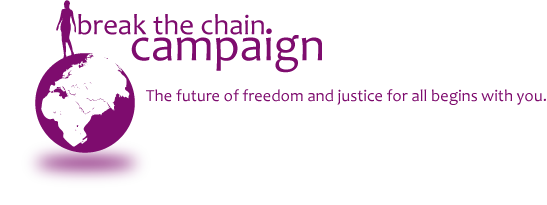Trafficking and Natural Disasters
 Thursday, March 4, 2010 at 2:18PM
Thursday, March 4, 2010 at 2:18PM
By Caroline Talev, Domestic workers health Center Intern
After the 7.0-magnitude earthquake that hit Haiti’s capital on January 12, 2010, Prime Minister Jean-Max Bellerive announced a death toll of over 100,000 people. The International Red Cross estimates three million people will be affected. This means 1/3rd of the population of one of the world’s poorest countries will be impacted by this disaster.
Traffickers target people that are put in vulnerable circumstances. This is especially true with children in Haiti; their sources of protection (families, polices, schools, churches, etc.) have disappeared as a result of the earthquake. It is estimated that up to one million children are left alone, leaving them helpless and perfect candidates for traffickers. According to a story in the Telegraph on January 28,2010 there were reports of men being lynched after being accused of trying to steal infants from tents. Situations such as these raise fear that child trafficking gangs could move into desperately poor rural areas that don’t have the proper security or access to aid. Bellerive said in an interview with CNN “after the earthquake, because of its growing number of orphans, illegal child trafficking is one of the biggest problems we [Haiti] have.” You can read the full article here. Due to the events that have recently taken place with child adoption, the government now requires the Prime Minister to personally authorize the departure of any child as a means to stop trafficking.
Even before the earthquake hit, Haiti had a serious problem with trafficking; with an estimated 300,000 abandoned or orphaned children vulnerable to criminals. Haiti is a source, transit, and destination country for children trafficked for forced labor and sexual exploitation. The most common form of trafficking are children sold into domestic servitude, commonly known as restavek. This is a tradition where poor mothers give custody of their children to more affluent families, in the hope that they will receive a proper education and economic opportunities. Unfortunately, the reality is severe mistreatment, abuse and long hours of intense labor. UNICEF estimates that there were 250,000- 300,000 restaveks pre-earthquake.
Traffickers target people who are poor and vulnerable. These components are deeply connected to and amplified by hurricanes, floods, fires, tsunamis and other natural disasters. According to ECPAT International, trafficking of children increased dramatically after severe droughts in Swaziland in 2007 and flooding in India in 2008. A U.S. State Department document released after the Indonesian tsunami read:“There were sporadic reports of rape, sexual abuse, kidnapping and trafficking in persons in the countries devastated by the tsunami. Thousands of orphaned children were vulnerable to exploitation by criminal elements seeing profit from their misery.” You can read the full article here. A notorious example of trafficking after a disaster was mentioned on the website for the New Orleans Workers’ Center for Racial Justice, when approximately 500 individuals were trafficked to the United States after Hurricane Katrina hit, only to find themselves subject to forced labor. When a country is hit by a natural disaster, it is important to understand that after the emergency aid organizations time in a place comes to an end, the traffickers that prey on these victims are just beginning.


Reader Comments (1)
Thank you for bringing awareness to such an underpublicized aspect of this tragic situation.